ART NEWS:May 01
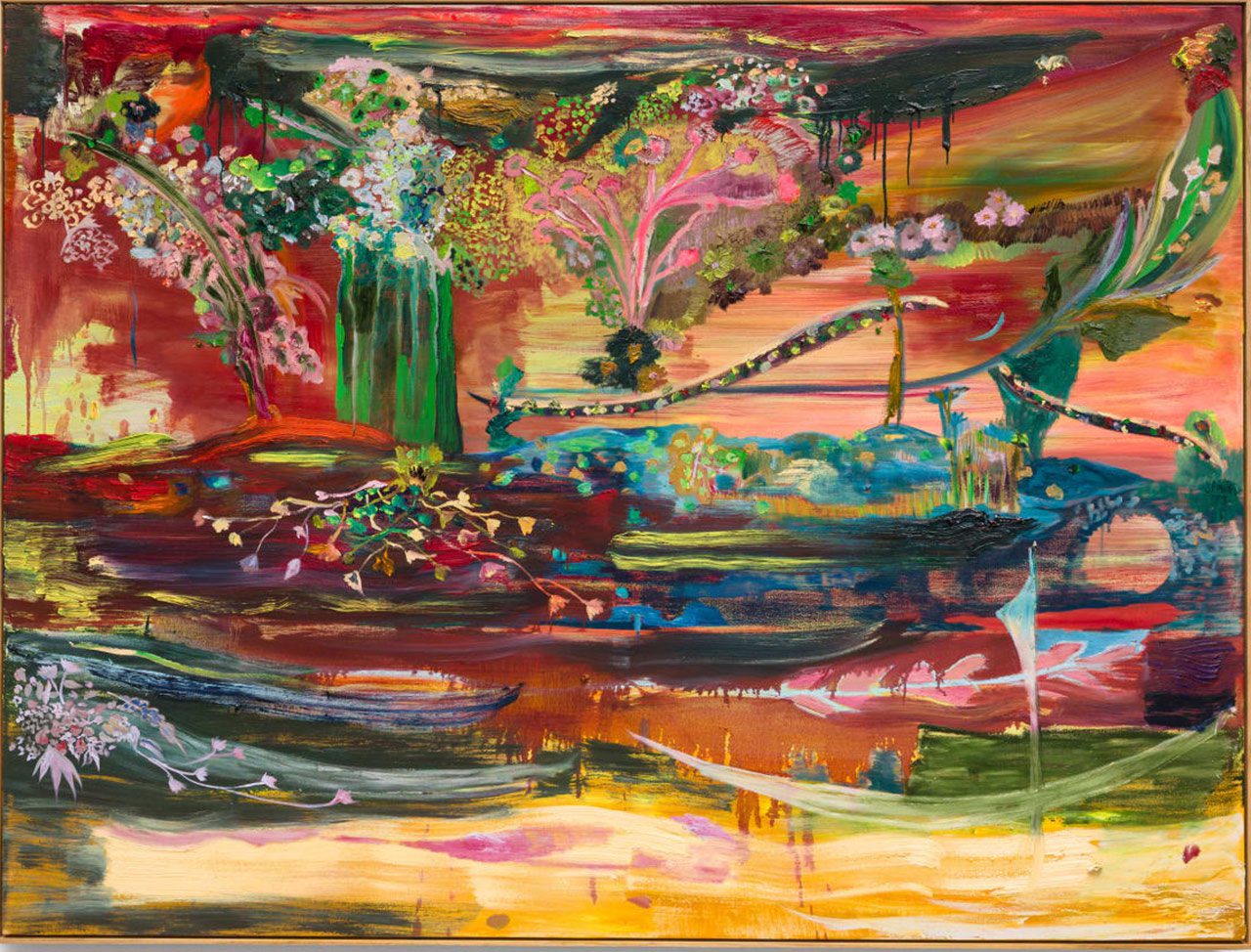 For her solo exhibition ”Nascer da Terra”, Thalita Hamaoui weaves generational memory and folklore into imagined landscapes teeming with the abundance of tropical nature. Hamaoui, the child of Romanian and Egyptian immigrants, grew up in Brazil, surrounded by the country’s lush, verdant landscapes—from the tropical Amazon to the rugged Serra do Mar. As a child, she was close with her maternal grandmother, who would frequently recount tales of her native Romania—particularly of the infamously haunted Hoia-Baciu Forest. For Hamaoui, who had never been to Romania, the landscape of these stories took on a tropical character as they wove their way into her memory. When Hamaoui began painting, it was her grandmother’s stories—as they lived in her imagination—that she conjured on canvas. These stories, turned over again and again in the artist’s memory, animate the paintings in the exhibition, populated, as they are, with dense, eerie foliage, and twisting, contorted trees. Infused with generational memory, these works nevertheless take on a distinctly Brazilian character, deeply informed by the color, chaos, and abundance of tropical nature. Info: Marianne Boesky Gallery, 509 West 24th Street, New York, NY, USA, Duration: 1/5-15/6/2025, Days & Hours: Tue-Sat 10:00-18:00, https://marianneboeskygallery.com/
For her solo exhibition ”Nascer da Terra”, Thalita Hamaoui weaves generational memory and folklore into imagined landscapes teeming with the abundance of tropical nature. Hamaoui, the child of Romanian and Egyptian immigrants, grew up in Brazil, surrounded by the country’s lush, verdant landscapes—from the tropical Amazon to the rugged Serra do Mar. As a child, she was close with her maternal grandmother, who would frequently recount tales of her native Romania—particularly of the infamously haunted Hoia-Baciu Forest. For Hamaoui, who had never been to Romania, the landscape of these stories took on a tropical character as they wove their way into her memory. When Hamaoui began painting, it was her grandmother’s stories—as they lived in her imagination—that she conjured on canvas. These stories, turned over again and again in the artist’s memory, animate the paintings in the exhibition, populated, as they are, with dense, eerie foliage, and twisting, contorted trees. Infused with generational memory, these works nevertheless take on a distinctly Brazilian character, deeply informed by the color, chaos, and abundance of tropical nature. Info: Marianne Boesky Gallery, 509 West 24th Street, New York, NY, USA, Duration: 1/5-15/6/2025, Days & Hours: Tue-Sat 10:00-18:00, https://marianneboeskygallery.com/
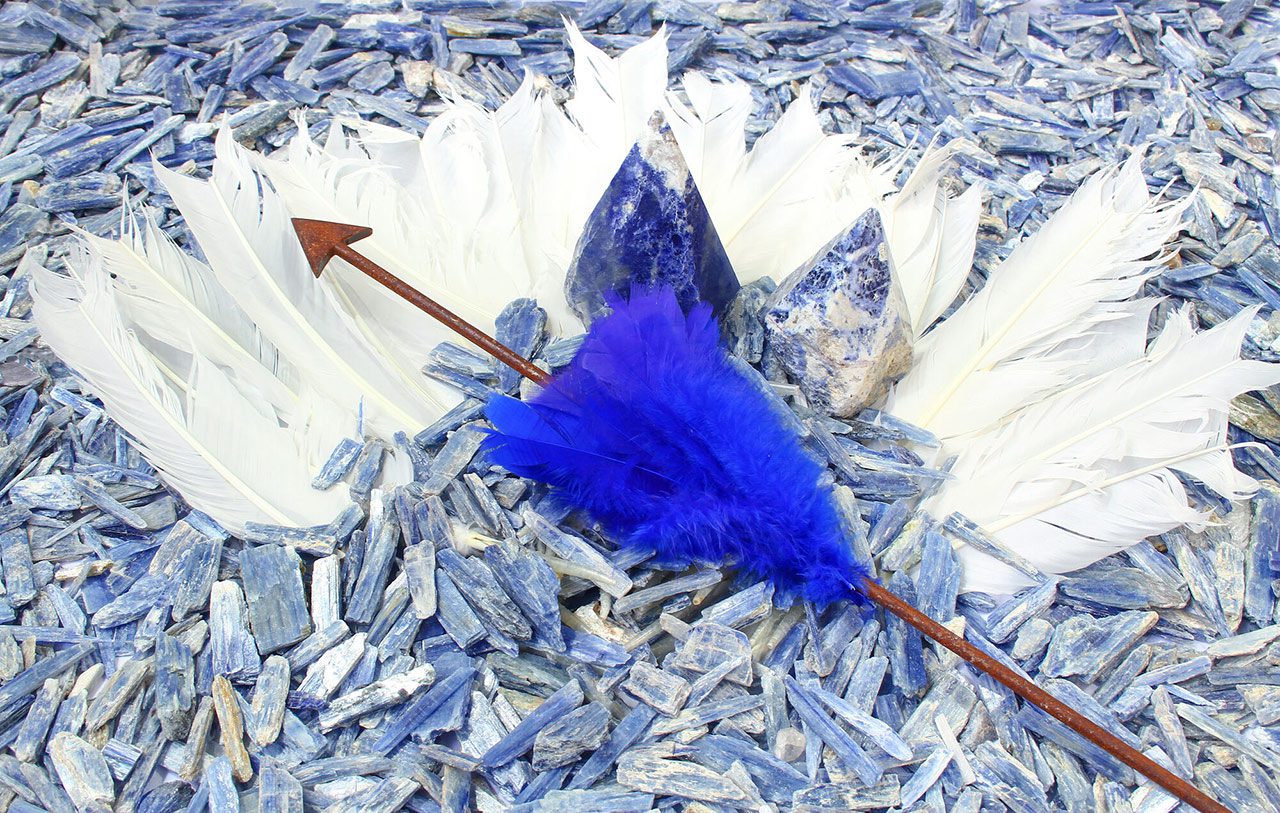 Luana Vitra’s practice is deeply intertwined with her home region of Minas Gerais, Brazil. The mineral-rich state is known for its historical export of gold through forced labour and for its current prominence in the extractive iron mining industry. Through an abstract language that encompasses drawing, painting, performance, sculpture, and installation, her work is interested in the metallurgical and transformative charge of minerals and their capacity for metamorphosis, often creating a dialogue between the natural and industrial manifestations of materials. For “Amulets”, Vitra temporarily makes visible the threshold between the physical and spiritual presence of minerals through an energetically directed environment, presenting minerals as ritual manifestation. They take shape in a new set of sculptures that include tall iron totems wrapped in white fabric and detailed with amarrações: knots that symbolise the act of sealing the gesture of intention at the moment of invoking a spell, or as a way of enclosing it within. Amulets reinforces Vitra’s dedication to an aesthetic rooted in the spiritual. She invites visitors to look beyond sculptures’ material properties of sculpture and its circulation as commodities within a capitalist economy, and to envision another dimension to which they belong. Info: Curator: Jovanna Venegas, Sculpture Center, 44-19 Purves Street, Long Island City, NY, USA, Duration: 1/5-28/7/2025, Days & Hours: Thu-Mon 12:00-18:00, www.sculpture-center.org/
Luana Vitra’s practice is deeply intertwined with her home region of Minas Gerais, Brazil. The mineral-rich state is known for its historical export of gold through forced labour and for its current prominence in the extractive iron mining industry. Through an abstract language that encompasses drawing, painting, performance, sculpture, and installation, her work is interested in the metallurgical and transformative charge of minerals and their capacity for metamorphosis, often creating a dialogue between the natural and industrial manifestations of materials. For “Amulets”, Vitra temporarily makes visible the threshold between the physical and spiritual presence of minerals through an energetically directed environment, presenting minerals as ritual manifestation. They take shape in a new set of sculptures that include tall iron totems wrapped in white fabric and detailed with amarrações: knots that symbolise the act of sealing the gesture of intention at the moment of invoking a spell, or as a way of enclosing it within. Amulets reinforces Vitra’s dedication to an aesthetic rooted in the spiritual. She invites visitors to look beyond sculptures’ material properties of sculpture and its circulation as commodities within a capitalist economy, and to envision another dimension to which they belong. Info: Curator: Jovanna Venegas, Sculpture Center, 44-19 Purves Street, Long Island City, NY, USA, Duration: 1/5-28/7/2025, Days & Hours: Thu-Mon 12:00-18:00, www.sculpture-center.org/
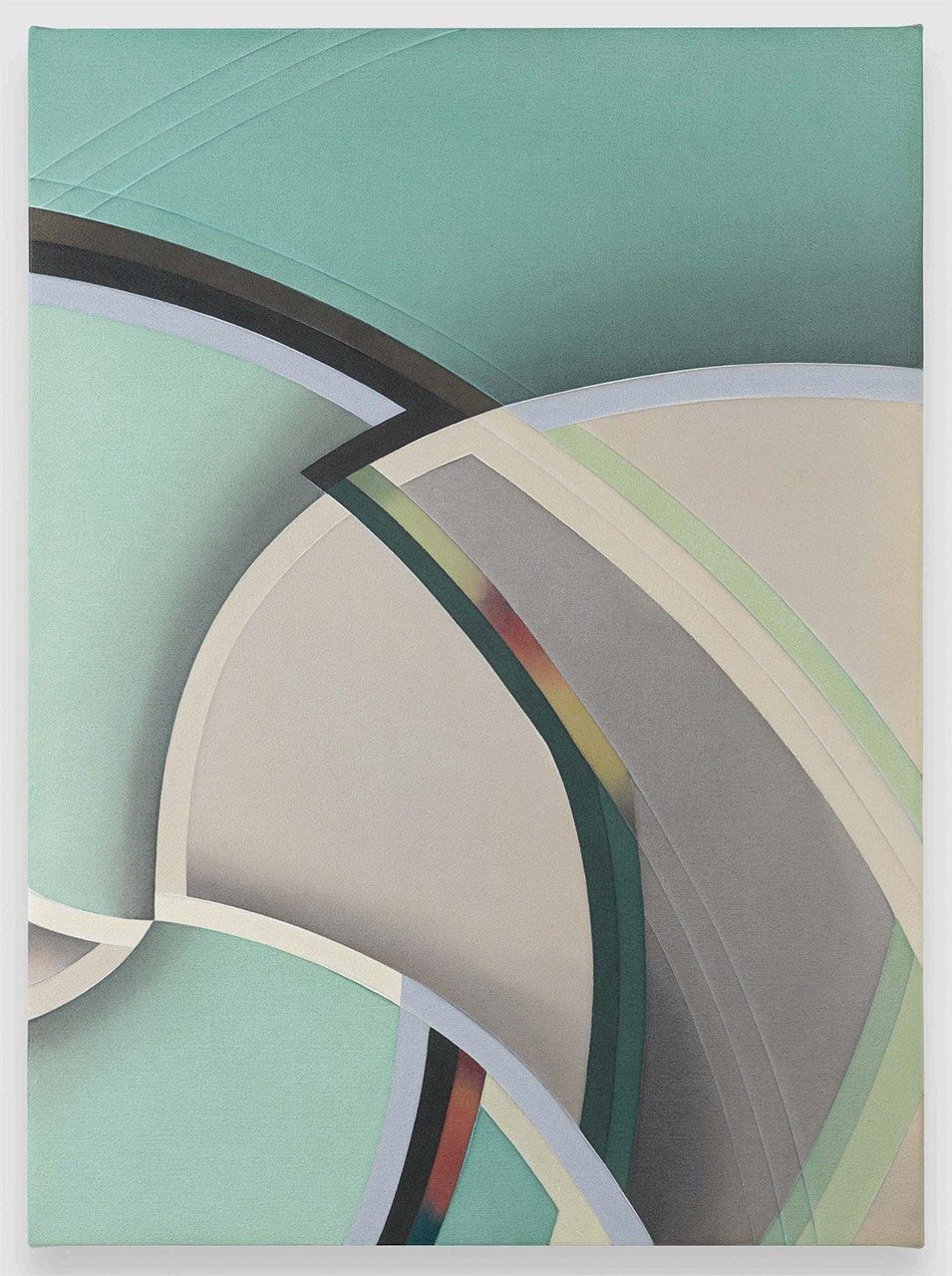 Tomma Abts presents a group of new paintings that showcases the artist’s sustained engagement with process and form. These works, which extend the ongoing body of intimately scaled canvases that Abts has been making since 1998, are among her most experimental to date, playfully exploring new possibilities in their medium, format, and composition. Abts is known for her complex paintings and drawings that evolve in accordance with a self-determined and ever-widening set of parameters, which results in compositions that are intuitively constructed and precisely articulated. The textured surface, fine ridges, and subtle gradations of color are evidence of the process of finding, rendering, and establishing a final image. In the works on view—which include a painting in two parts and a painting on silk, as well as two works that incorporate a segment of a bronze or aluminum cast—Abts finds alternate means of beginning, realizing, and resolving a painting. In some of the paintings, the artist employs the structure of a previously established composition, using it as a starting point to further explore its properties, shifting focus to different aspects of scale, color, surface, and support. Likewise, three of the exhibited works are larger paintings, the first instance of Abts working on a different scale within this body of work. The artist deepens her investigation by locating new facets of material and depth that underscore the sense of discovery inherent to her process. Info: David Zwirner Gallery, 525 West 19th Street, New York, NY, USA, Duration: 1/5-14/6/2025, Days & Hours: Tue-Sat 10:00-18:00, www.davidzwirner.com/
Tomma Abts presents a group of new paintings that showcases the artist’s sustained engagement with process and form. These works, which extend the ongoing body of intimately scaled canvases that Abts has been making since 1998, are among her most experimental to date, playfully exploring new possibilities in their medium, format, and composition. Abts is known for her complex paintings and drawings that evolve in accordance with a self-determined and ever-widening set of parameters, which results in compositions that are intuitively constructed and precisely articulated. The textured surface, fine ridges, and subtle gradations of color are evidence of the process of finding, rendering, and establishing a final image. In the works on view—which include a painting in two parts and a painting on silk, as well as two works that incorporate a segment of a bronze or aluminum cast—Abts finds alternate means of beginning, realizing, and resolving a painting. In some of the paintings, the artist employs the structure of a previously established composition, using it as a starting point to further explore its properties, shifting focus to different aspects of scale, color, surface, and support. Likewise, three of the exhibited works are larger paintings, the first instance of Abts working on a different scale within this body of work. The artist deepens her investigation by locating new facets of material and depth that underscore the sense of discovery inherent to her process. Info: David Zwirner Gallery, 525 West 19th Street, New York, NY, USA, Duration: 1/5-14/6/2025, Days & Hours: Tue-Sat 10:00-18:00, www.davidzwirner.com/
 Ghada Amer in her solo exhibition “Disobedient Thoughts” presents a suite of new embroidered paintings alongside experimental sculptures in ceramic, bronze, and steel. Amer presents her most ambitious embroidered paintings, in both scale and process, to date. With “The Lilly Puddle” (2025) and “The Ladies of Giverny” (2025 Amer refers to Claude Monet’s light-infused water lilies and sheaves of grain. With “The Grid of 2025” (2025) Amer alludes to the sharp geometries of Piet Mondrian, Kazimir Malevich, or a litany of modernist painters committed to investigating the grid. And at “ My Homage to the Square 1” (2025) and “My Homage to the Square” 2 (2025) quote Josef Albers’ series of more than a thousand Homage to the Square paintings. In all of these works, the referential compositions of excess threads—which are attached to the surface of the painting with a gel medium—obscure the drawings of women beneath, a subtle but intentional nod by Amer to the ways in which women have been obscured from art’s histories. Info: Marianne Boesky Gallery, 509 West 24th Street, New York, NY, USA, Duration: 1/5-15/6/2025, Days & Hours: Tue-Sat 10:00-18:00, https://marianneboeskygallery.com/
Ghada Amer in her solo exhibition “Disobedient Thoughts” presents a suite of new embroidered paintings alongside experimental sculptures in ceramic, bronze, and steel. Amer presents her most ambitious embroidered paintings, in both scale and process, to date. With “The Lilly Puddle” (2025) and “The Ladies of Giverny” (2025 Amer refers to Claude Monet’s light-infused water lilies and sheaves of grain. With “The Grid of 2025” (2025) Amer alludes to the sharp geometries of Piet Mondrian, Kazimir Malevich, or a litany of modernist painters committed to investigating the grid. And at “ My Homage to the Square 1” (2025) and “My Homage to the Square” 2 (2025) quote Josef Albers’ series of more than a thousand Homage to the Square paintings. In all of these works, the referential compositions of excess threads—which are attached to the surface of the painting with a gel medium—obscure the drawings of women beneath, a subtle but intentional nod by Amer to the ways in which women have been obscured from art’s histories. Info: Marianne Boesky Gallery, 509 West 24th Street, New York, NY, USA, Duration: 1/5-15/6/2025, Days & Hours: Tue-Sat 10:00-18:00, https://marianneboeskygallery.com/
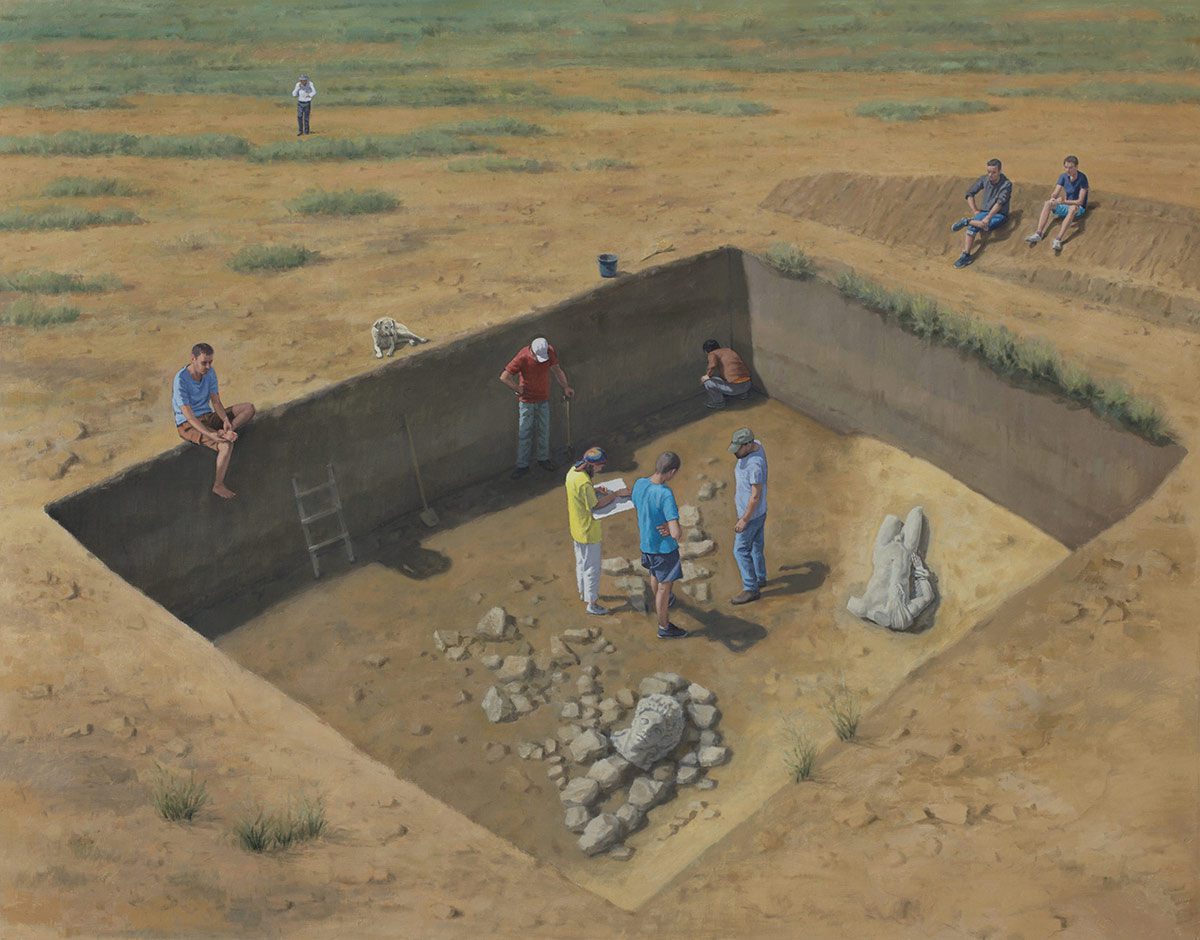 Interested in the multiple meanings of visible reality, Serban Savu paints the world around him as reflected through the lens of art history. Characterized by empathy and a keen sense of observation, his paintings employ synthesis and re-composition to invite viewers to reassess the present within a broader historical context. For his solo exhibition, “Golden Ages”, Serban Savu continues his investigation of history and art history, revisiting and reinterpreting themes such as myths, ruins, and hunting. In a narrative where each epoch is built on the ruins of its precursors, Savu reflects on how we relate to the past, inviting us to view the present as though it already were the past—a continuous sequence of construction and destruction. Underlying these motifs is a deeper meditation on the fragile boundary between the world shaped by human ambition and the elusive remnants of a reality beyond our control. This tension animates the works in the exhibition, where scenes like archaeological digs unfold with uncanny stillness—moments caught between excavation and entombment, presence and absence. Through such images, Savu constructs a world in which the contemporary and the ancient are not neatly separated by time, but layered—coexisting in silence, as if waiting to be reinterpreted. Info: Galeria Plan B, Strausberger Platz 1, Berlin, Germany, Duration: 2-21/5/2025, Days & Hours: Tue-Sat 12:00-18:00, www.plan-b.ro/
Interested in the multiple meanings of visible reality, Serban Savu paints the world around him as reflected through the lens of art history. Characterized by empathy and a keen sense of observation, his paintings employ synthesis and re-composition to invite viewers to reassess the present within a broader historical context. For his solo exhibition, “Golden Ages”, Serban Savu continues his investigation of history and art history, revisiting and reinterpreting themes such as myths, ruins, and hunting. In a narrative where each epoch is built on the ruins of its precursors, Savu reflects on how we relate to the past, inviting us to view the present as though it already were the past—a continuous sequence of construction and destruction. Underlying these motifs is a deeper meditation on the fragile boundary between the world shaped by human ambition and the elusive remnants of a reality beyond our control. This tension animates the works in the exhibition, where scenes like archaeological digs unfold with uncanny stillness—moments caught between excavation and entombment, presence and absence. Through such images, Savu constructs a world in which the contemporary and the ancient are not neatly separated by time, but layered—coexisting in silence, as if waiting to be reinterpreted. Info: Galeria Plan B, Strausberger Platz 1, Berlin, Germany, Duration: 2-21/5/2025, Days & Hours: Tue-Sat 12:00-18:00, www.plan-b.ro/
 The Feuerle Collection presents a cycle of four exhibitions with paintings and astrological lectures by Alexander Graf von Schlieffen, With this project, the institution explores for the first time within its cultural program the field of astrology, an essential element of von Schlieffen’s practice, and a recurring reference in Western art since the Italian Renaissance, which continues to garner significant attention in contemporary society. Alexander Graf von Schlieffen’s work as a painter began in the late 1980s and has evolved over time, drawing on motifs from the Italian Renaissance and influences from American color field painting. His artistic practice reflects a profound exploration of symbolism, interconnectedness, and mysticism. Parallel to his work as a painter, von Schlieffen began his journey as an astrologist in 1991, developing a deep engagement with the cyclical patterns of life and the philosophical dimensions of this discipline. This dual focus has informed and enriched both his artistic and astrological practices. The selection of works for the four episodes of the show traces the evolution of von Schlieffen’s painting practice, presenting both early and recent pieces. Feuerle’s curation will employ his distinctive, refined use of light and space design to highlight and unveil crucial aspects of the artworks in an intimately sensual way. Info: Curator: Désiré Feuerle, The Feuerle Collection, Hallesches Ufer 70, Berlin, Germany, Duration: First Exhibition Second Exhibition 2/5-1/6/2025, Days & Hours: By appointment only (Book here), www.thefeuerlecollection.org/
The Feuerle Collection presents a cycle of four exhibitions with paintings and astrological lectures by Alexander Graf von Schlieffen, With this project, the institution explores for the first time within its cultural program the field of astrology, an essential element of von Schlieffen’s practice, and a recurring reference in Western art since the Italian Renaissance, which continues to garner significant attention in contemporary society. Alexander Graf von Schlieffen’s work as a painter began in the late 1980s and has evolved over time, drawing on motifs from the Italian Renaissance and influences from American color field painting. His artistic practice reflects a profound exploration of symbolism, interconnectedness, and mysticism. Parallel to his work as a painter, von Schlieffen began his journey as an astrologist in 1991, developing a deep engagement with the cyclical patterns of life and the philosophical dimensions of this discipline. This dual focus has informed and enriched both his artistic and astrological practices. The selection of works for the four episodes of the show traces the evolution of von Schlieffen’s painting practice, presenting both early and recent pieces. Feuerle’s curation will employ his distinctive, refined use of light and space design to highlight and unveil crucial aspects of the artworks in an intimately sensual way. Info: Curator: Désiré Feuerle, The Feuerle Collection, Hallesches Ufer 70, Berlin, Germany, Duration: First Exhibition Second Exhibition 2/5-1/6/2025, Days & Hours: By appointment only (Book here), www.thefeuerlecollection.org/
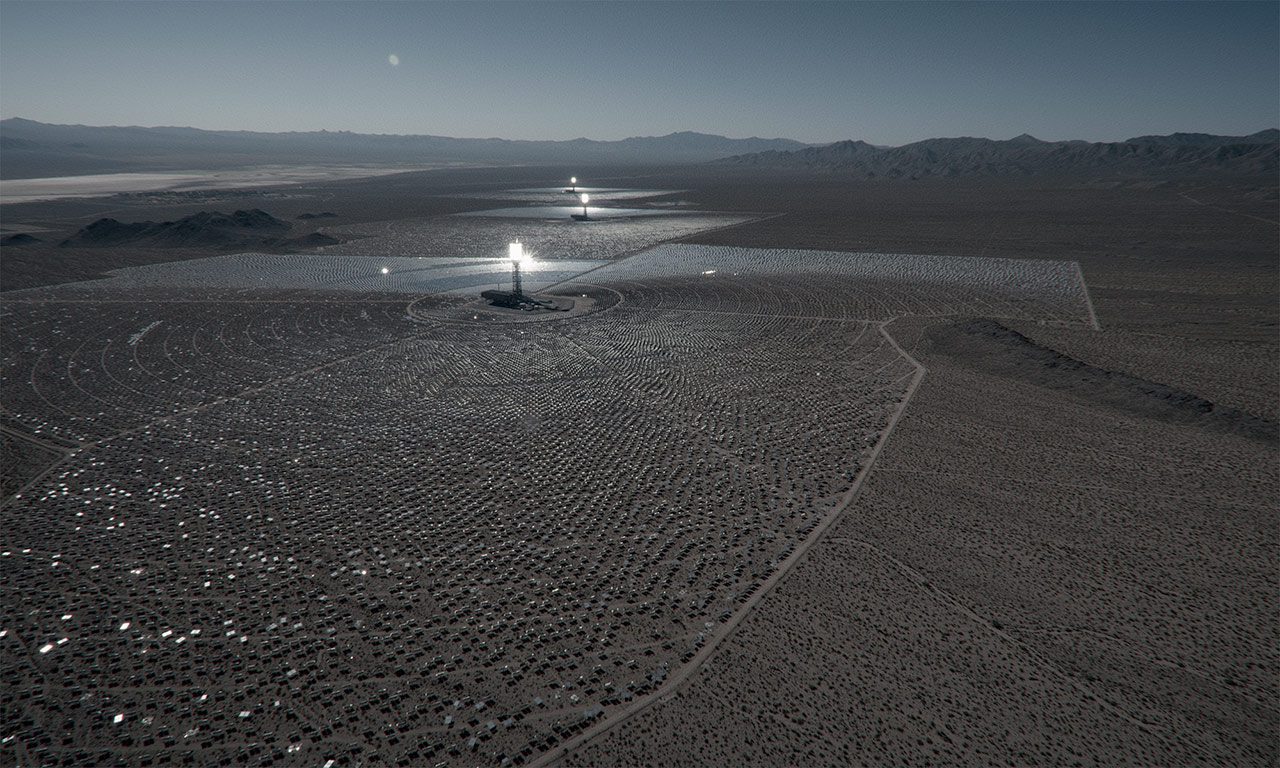 In Rosa Barba’s conceptual explorations of film, the artist regards cinema as an architectural medium, using film as a speculative instrument to examine the unique properties of space. Featuring film, kinetic sculpture, and sound activations, the exhibition “The Ocean of One’s Pause” spans 15 years of Barba’s work. “Charge”, a new 35mm film co-commissioned by MoMA and The Vega Foundation, Toronto, forms the core of the installation and probes light as a source of ecological and societal change. Barba’s films often explore natural landscapes and human-made changes to the environment by delving into historical records, personal narratives, and the sensory experience of film. Accompanying these works is a series of live performances that reconceive the relationship between cinema, the body, and the human voice. In each performance of “The Ocean of One’s Pause”, the sonic frequencies of percussionist Chad Taylor, vocalist Alicia Hall Moran, and Barba herself will activate a symphony of images throughout the installation. Rather than playing an accompanying role to the moving image, in this work, Barba has sound take center stage, prompting a live collaboration between light, voice, rhythm, and film that emphasizes the interdependency of each. Info: MoMA (Museum of Modern Art), 11 West 53 Street, New York, NY, USA, Duration: 3/5-6/7/2025, Days & Hours: Mon-Thu & Sat=Sun 10:30-17:30, Fri 10:30-20:30, www.moma.org/
In Rosa Barba’s conceptual explorations of film, the artist regards cinema as an architectural medium, using film as a speculative instrument to examine the unique properties of space. Featuring film, kinetic sculpture, and sound activations, the exhibition “The Ocean of One’s Pause” spans 15 years of Barba’s work. “Charge”, a new 35mm film co-commissioned by MoMA and The Vega Foundation, Toronto, forms the core of the installation and probes light as a source of ecological and societal change. Barba’s films often explore natural landscapes and human-made changes to the environment by delving into historical records, personal narratives, and the sensory experience of film. Accompanying these works is a series of live performances that reconceive the relationship between cinema, the body, and the human voice. In each performance of “The Ocean of One’s Pause”, the sonic frequencies of percussionist Chad Taylor, vocalist Alicia Hall Moran, and Barba herself will activate a symphony of images throughout the installation. Rather than playing an accompanying role to the moving image, in this work, Barba has sound take center stage, prompting a live collaboration between light, voice, rhythm, and film that emphasizes the interdependency of each. Info: MoMA (Museum of Modern Art), 11 West 53 Street, New York, NY, USA, Duration: 3/5-6/7/2025, Days & Hours: Mon-Thu & Sat=Sun 10:30-17:30, Fri 10:30-20:30, www.moma.org/
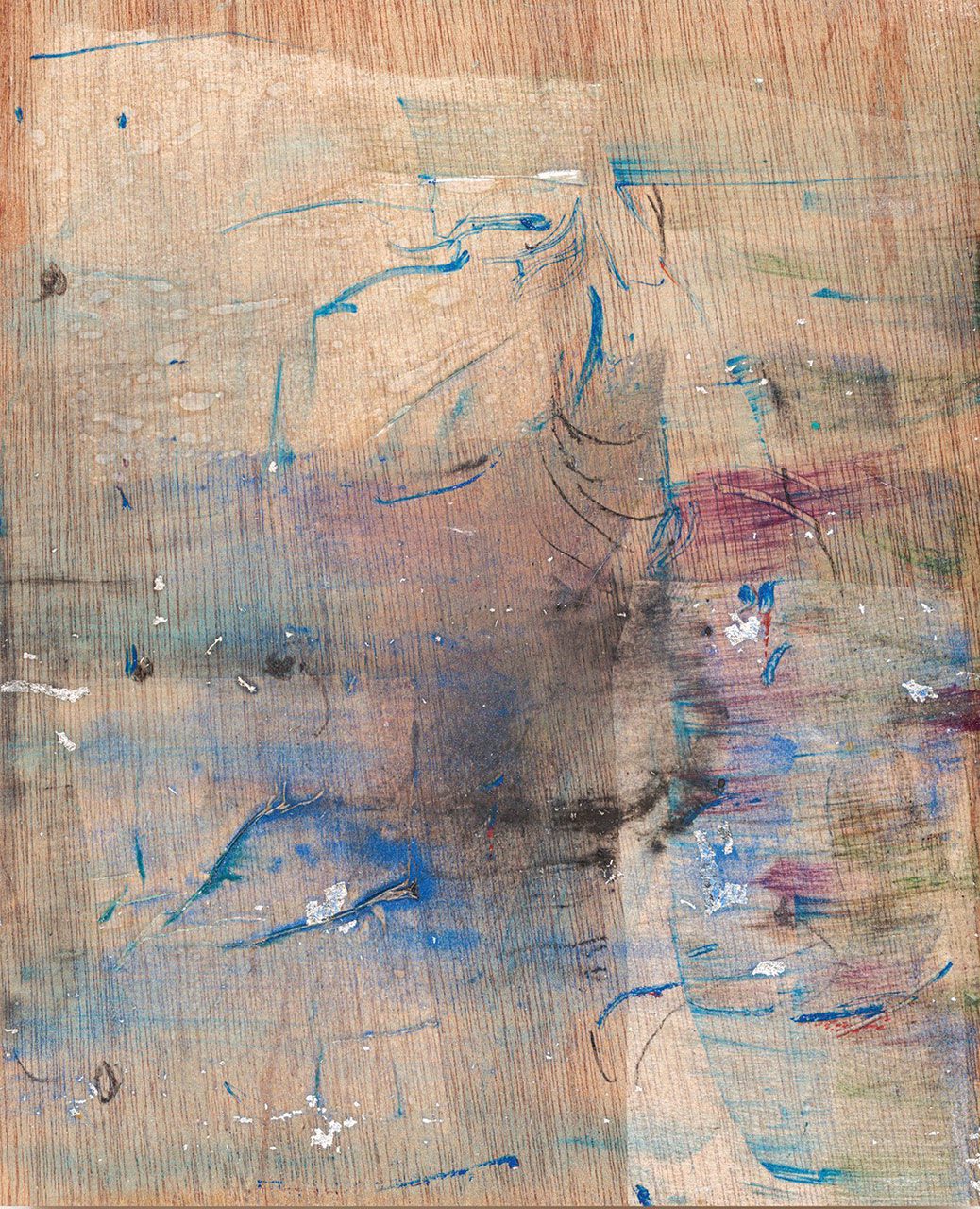 Under the title “wood, oil and spiral”, Hinako Miyabayashi is showing new paintings in a wide variety of formats. Hinako Miyabayashi paints her pictures in such a way that all the colors used remain clearly recognizable. Through her gift of taking the painting materials seriously, she draws us to her picture and lends us invisible hare ears, with which we can hear the colors. Although this metamorphosis remains a fantasy, as such it fulfills the purpose of illustrating the cosmos that the artist develops in her practice. Instead of creating traditional or even representational paintings, Miyabayashi‘s work explores the painting materials and their properties in the pathos of transience themselves – as elements of the living world with an inevitable end. Without depicting anything concrete, a natural landscape or the like, she creates paintings of vivid atmosphere that are at the same time wrapped in a mood that expresses empathy with all things. Hinako Miyabayashi often develops her settings against an unprocessed background. The resulting negative space follows a precise aesthetic principle. The areas left open create a constant moment of suggestion in the picture. Beneath the unfathomable open space is the depth of a mysterious body of water. Info: Galerie Guido W. Baudach, Pohlstraße 67, Berlin, Germany, Duration: 3/5-14/6/2025, Days & Hours: Tue-Sat 11:00-18:00, www.guidowbaudach.com/
Under the title “wood, oil and spiral”, Hinako Miyabayashi is showing new paintings in a wide variety of formats. Hinako Miyabayashi paints her pictures in such a way that all the colors used remain clearly recognizable. Through her gift of taking the painting materials seriously, she draws us to her picture and lends us invisible hare ears, with which we can hear the colors. Although this metamorphosis remains a fantasy, as such it fulfills the purpose of illustrating the cosmos that the artist develops in her practice. Instead of creating traditional or even representational paintings, Miyabayashi‘s work explores the painting materials and their properties in the pathos of transience themselves – as elements of the living world with an inevitable end. Without depicting anything concrete, a natural landscape or the like, she creates paintings of vivid atmosphere that are at the same time wrapped in a mood that expresses empathy with all things. Hinako Miyabayashi often develops her settings against an unprocessed background. The resulting negative space follows a precise aesthetic principle. The areas left open create a constant moment of suggestion in the picture. Beneath the unfathomable open space is the depth of a mysterious body of water. Info: Galerie Guido W. Baudach, Pohlstraße 67, Berlin, Germany, Duration: 3/5-14/6/2025, Days & Hours: Tue-Sat 11:00-18:00, www.guidowbaudach.com/
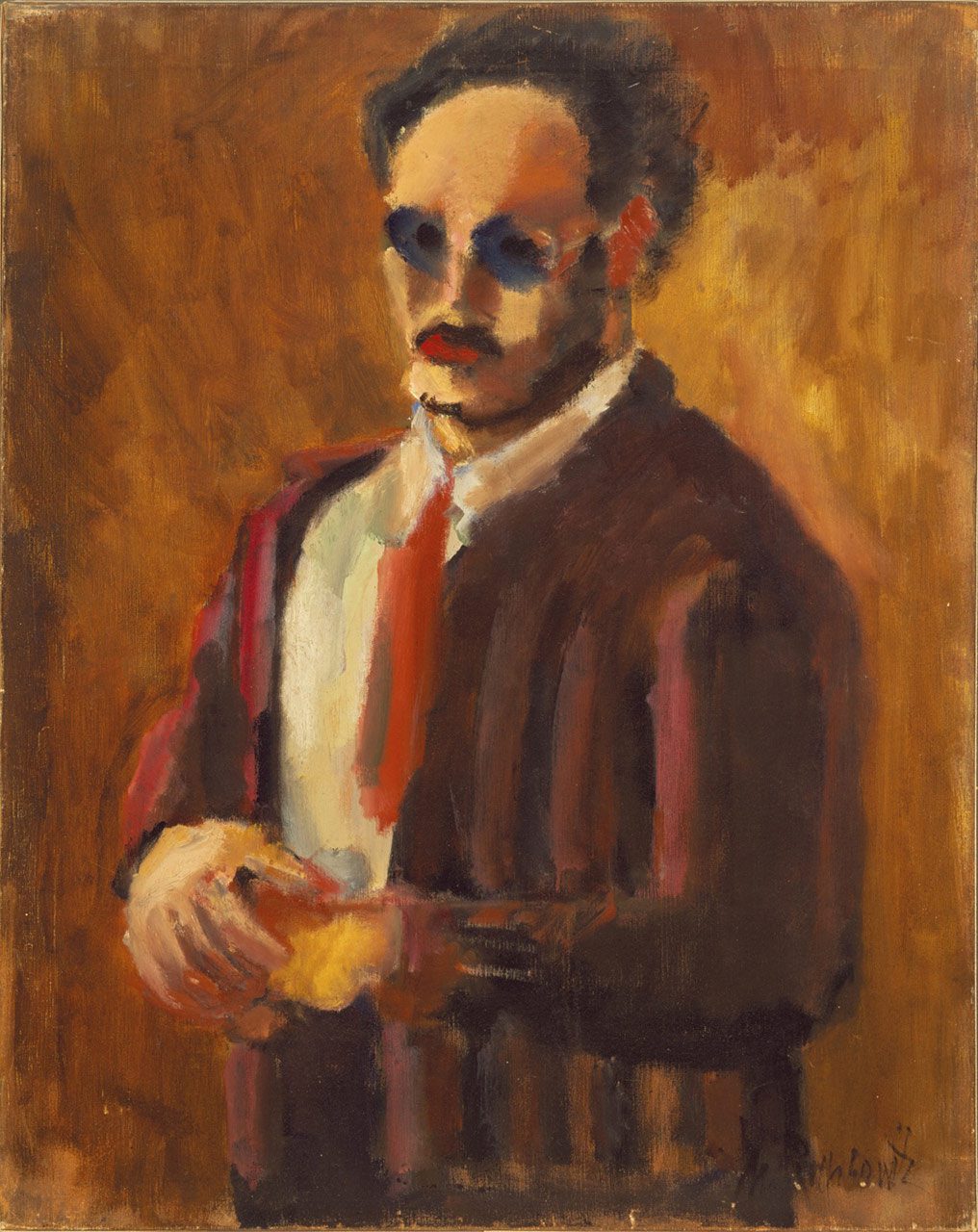 “Gottlieb/Rothko: The Realist Years” is the title of an exhibition with more than 30 works on canvas and paper by Mark Rothko and Adolph Gottlieb. The exhibition offers an intimate look at the artists’ friendship, mutual influences, and their parallel development during the 1920s and the 1930s. Their friendship began long before their pioneering roles in Abstract Expressionism, when both artists explored figuration in strikingly parallel trajectories, strongly influenced by the achievements of the School of Paris, German expressionism, and most of all their mentorship by Milton Avery. The exhibition provides a fresh perspective on the artists’ transition from figuration to abstraction, and is particularly relevant at a moment when most contemporary artists seem to be anchored to figuration. The Realist Years, which could have defined careers in themselves, was a period through which these two artists matriculated in their evolution to becoming key figures of post-war American painting, renowned for their emotional use of color. Meeting in the late 1920s in New York City, Rothko and Gottlieb shared artistic aspirations, intellectual curiosity, and even studio space together. In the exhibition, two drawings, exhibited side by side, are each of a man seated in a chair playing a mandolin. One of these drawings by Rothko is a portrait of Gottlieb, and the other by Gottlieb is a portrait of Rothko. Through side-by-side comparisons of these early paintings and drawings, the exhibition reveals how both artists experimented with flattened pictorial space, bold contours, and symbolic imagery foreshadowing their later breakthrough into abstraction. Info: 125 Newbury, 395 Broadway, New York, NY, USA, Duration: 9/5-25/7/2025, Days & Hours: Tue-Sat 10:00-18:00, http://125newbury.collagesite.net/
“Gottlieb/Rothko: The Realist Years” is the title of an exhibition with more than 30 works on canvas and paper by Mark Rothko and Adolph Gottlieb. The exhibition offers an intimate look at the artists’ friendship, mutual influences, and their parallel development during the 1920s and the 1930s. Their friendship began long before their pioneering roles in Abstract Expressionism, when both artists explored figuration in strikingly parallel trajectories, strongly influenced by the achievements of the School of Paris, German expressionism, and most of all their mentorship by Milton Avery. The exhibition provides a fresh perspective on the artists’ transition from figuration to abstraction, and is particularly relevant at a moment when most contemporary artists seem to be anchored to figuration. The Realist Years, which could have defined careers in themselves, was a period through which these two artists matriculated in their evolution to becoming key figures of post-war American painting, renowned for their emotional use of color. Meeting in the late 1920s in New York City, Rothko and Gottlieb shared artistic aspirations, intellectual curiosity, and even studio space together. In the exhibition, two drawings, exhibited side by side, are each of a man seated in a chair playing a mandolin. One of these drawings by Rothko is a portrait of Gottlieb, and the other by Gottlieb is a portrait of Rothko. Through side-by-side comparisons of these early paintings and drawings, the exhibition reveals how both artists experimented with flattened pictorial space, bold contours, and symbolic imagery foreshadowing their later breakthrough into abstraction. Info: 125 Newbury, 395 Broadway, New York, NY, USA, Duration: 9/5-25/7/2025, Days & Hours: Tue-Sat 10:00-18:00, http://125newbury.collagesite.net/
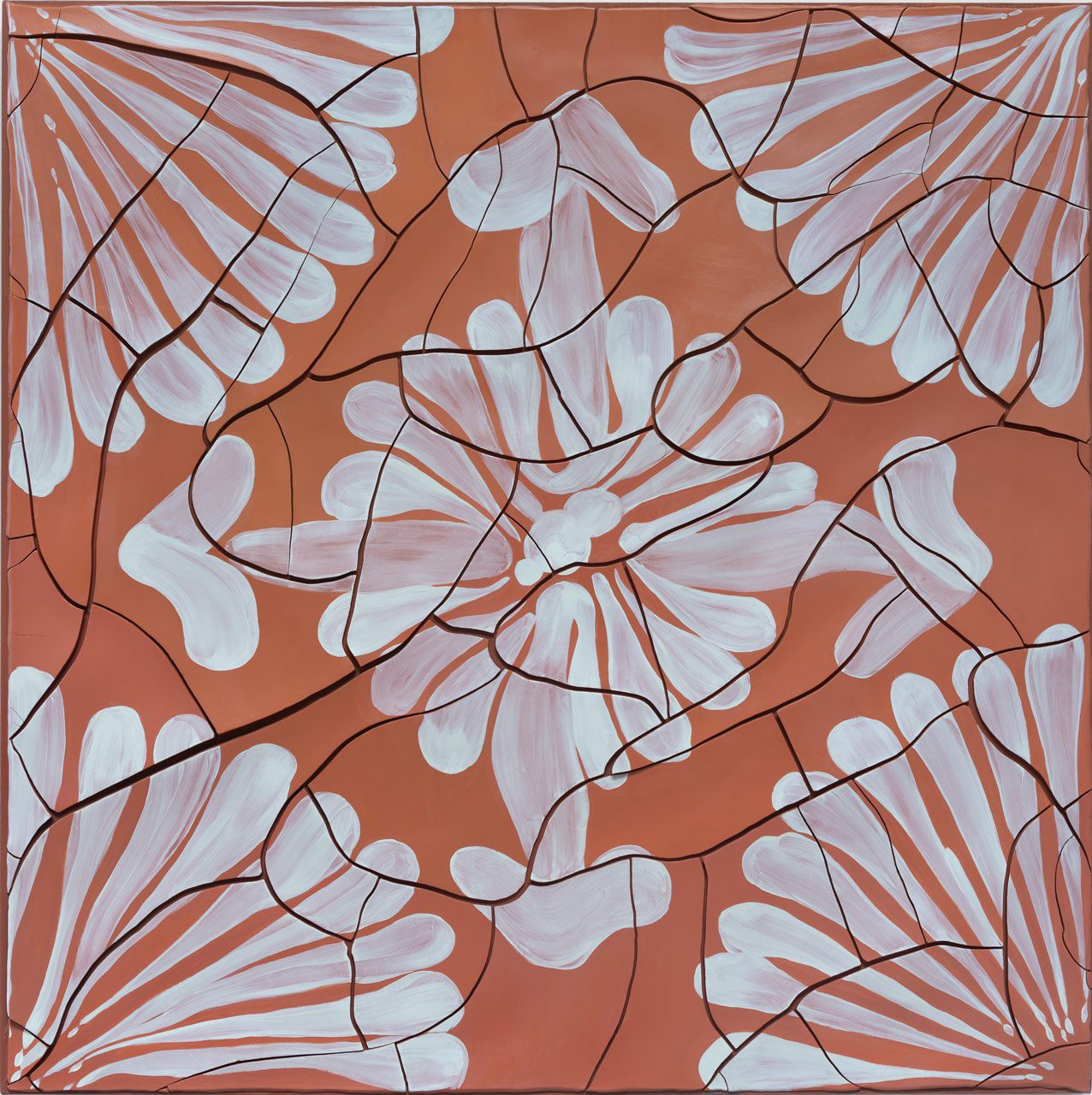 Adriana Varejão in “Histórias Moldadas”, her first exhibition in Greece, presents four new bodies of painting from Varejão’s Tile series, inspired by Brazilian, Greek, Turkish, and Chinese ceramic traditions. Embracing Baroque elements of parody, paradox, tension, and excess, Varejão creates sculptural paintings that rupture the surface and painterly sculptures imbued with vibrant drama. Her works challenge our understanding of artistic mediums while subverting established histories of art and culture. Her signature craquelure draws from the crackle-glazed ceramics of China’s Song dynasty (960–1279). Mixing plaster by hand, applying it to canvas, and allowing it to dry naturally, she engages in a delicate interplay between control and chance. The resulting fissures form an expressive calligraphy, echoing ruins, parched earth, and the material weight of time itself. The “Tile” paintings (1988–) simulate the weight, luster, and materiality of ceramics, connecting the cracked surfaces of Chinese porcelain to azulejos—the painted tiles that link Latin America to Europe, the Middle East, and Asia. Introduced to Brazil during its colonial inception, azulejos reflect a confluence of Baroque influences—from Islamic art to the Italian Renaissance, Dutch decor to Chinese ceramics. Info: Gagosian Gallery, 22 Anapiron Polemou Street, Athens, Greece, Duration: 15/5-14/6/2025, Days & Hours: Tue-Wed & Fri-Sat 11:00-19:00, Thu 11:00-20:00, https://gagosian.com/
Adriana Varejão in “Histórias Moldadas”, her first exhibition in Greece, presents four new bodies of painting from Varejão’s Tile series, inspired by Brazilian, Greek, Turkish, and Chinese ceramic traditions. Embracing Baroque elements of parody, paradox, tension, and excess, Varejão creates sculptural paintings that rupture the surface and painterly sculptures imbued with vibrant drama. Her works challenge our understanding of artistic mediums while subverting established histories of art and culture. Her signature craquelure draws from the crackle-glazed ceramics of China’s Song dynasty (960–1279). Mixing plaster by hand, applying it to canvas, and allowing it to dry naturally, she engages in a delicate interplay between control and chance. The resulting fissures form an expressive calligraphy, echoing ruins, parched earth, and the material weight of time itself. The “Tile” paintings (1988–) simulate the weight, luster, and materiality of ceramics, connecting the cracked surfaces of Chinese porcelain to azulejos—the painted tiles that link Latin America to Europe, the Middle East, and Asia. Introduced to Brazil during its colonial inception, azulejos reflect a confluence of Baroque influences—from Islamic art to the Italian Renaissance, Dutch decor to Chinese ceramics. Info: Gagosian Gallery, 22 Anapiron Polemou Street, Athens, Greece, Duration: 15/5-14/6/2025, Days & Hours: Tue-Wed & Fri-Sat 11:00-19:00, Thu 11:00-20:00, https://gagosian.com/
